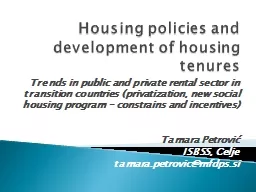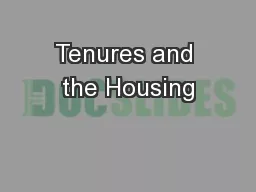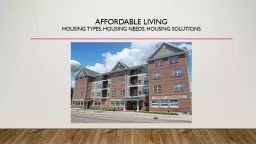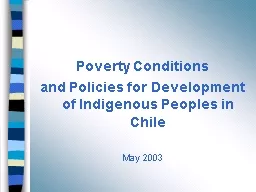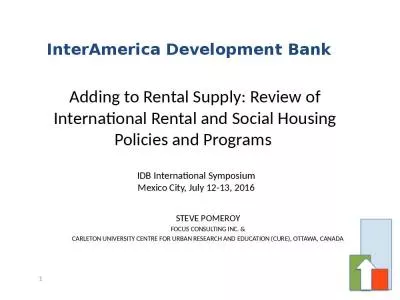PPT- Housing policies and development of housing tenures
Author : alida-meadow | Published Date : 2017-08-28
Trends in public and private rental sector in transition countries privatization new social housing program constrains and incentives Tamara Petrović ISBSS Celje
Presentation Embed Code
Download Presentation
Download Presentation The PPT/PDF document " Housing policies and development of h..." is the property of its rightful owner. Permission is granted to download and print the materials on this website for personal, non-commercial use only, and to display it on your personal computer provided you do not modify the materials and that you retain all copyright notices contained in the materials. By downloading content from our website, you accept the terms of this agreement.
Housing policies and development of housing tenures: Transcript
Download Rules Of Document
" Housing policies and development of housing tenures"The content belongs to its owner. You may download and print it for personal use, without modification, and keep all copyright notices. By downloading, you agree to these terms.
Related Documents

